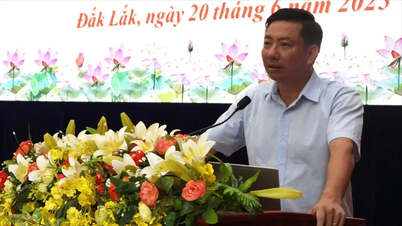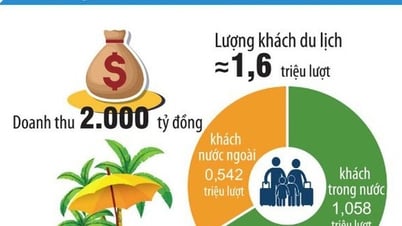
According to the Press Release on the labor and employment situation in the first quarter of 2025 of the General Statistics Office, the number of unemployed and uneducated youth (aged 15-24) is 1.35 million, accounting for 10.4% of the total youth population. Specifically, the rate of unemployed and uneducated youth in urban areas is 8.2%; in rural areas it is 11.7%; unemployed and uneducated female youth is 11.5%; and male youth is 9.3%.
Meanwhile, every year hundreds of thousands of university and college graduates enter the labor market, increasing competitive pressure while the number of jobs tends to shrink. This shows an increasingly obvious paradox: The supply of young labor is abundant but there is a lack of stable jobs.
One of the important reasons is the rapid development of science and technology, especially artificial intelligence (AI), automation and digital transformation. These advances have caused many traditional jobs to be replaced, while new positions require highly specialized skills, quick adaptability and creative thinking, which not all young people are fully equipped with.
Many businesses today tend to choose high-quality human resources, instead of recruiting in large numbers, leading to a shortage of jobs for workers. In addition, fierce competition in the labor market comes not only from the domestic workforce but also from international human resources. Vietnam is deeply integrating into the world economy , opening up many opportunities, but at the same time also entailing fierce competitive pressure. In addition to competing with peers, young people also have to face experienced candidates from other countries, with foreign language proficiency, technological skills and professional working style. On the other hand, there is still an imbalance between training and the actual needs of businesses. Many students after graduation lack practical skills, do not meet job requirements, forcing businesses to retrain from the beginning or prioritize recruiting experienced people. Meanwhile, a segment of young people have the mentality of choosing "easy, high-paying" jobs, lacking the spirit of learning and the willingness to accumulate experience from low starting positions.
Ms. Luu Kim Loan, a bachelor of public relations at Van Lang University ( Ho Chi Minh City), shared with Thu Dau Mot University students who are looking for part-time jobs: “I graduated nearly 3 years ago, and currently I am helping my family business while looking for a suitable job. Since graduating, I have also tried out and officially worked at 2 units, but I feel that it is not suitable. Not only me, many friends in the same class also have difficulty finding jobs. Some people cannot find jobs, some find jobs but the income is very low or the job is not related to their major.”
It can be seen that, although they come from prestigious universities and graduate from “hot” majors, that does not mean that young people will have an advantage in developing their careers. This reality requires educational institutions to improve their training programs in line with practice, promote cooperation with businesses so that students have the opportunity to do internships and gain exposure to the real working environment.
On the young side, it is necessary to proactively equip themselves not only with professional knowledge but also with soft skills, the ability to use technology, foreign languages, and especially a lifelong learning mindset to adapt to the constant changes of the labor market.
At the same time, social organizations need to continue to improve policies to support startups, career guidance and connect labor supply and demand, especially in rural and remote areas where job opportunities are still limited.
In the digital age, work is not simply a fixed position but a journey of continuous learning and adaptation. For young workers, challenges are also opportunities if they know how to take advantage, innovate their thinking and prepare thoroughly for life. Only then will the dream of stable employment and sustainable development truly be within the reach of the young generation.
According to the Press Release on the labor and employment situation in the first quarter of 2025 of the General Statistics Office, the number of unemployed and uneducated youth (aged 15-24) is 1.35 million, accounting for 10.4% of the total youth population. Specifically, the rate of unemployed and uneducated youth in urban areas is 8.2%; in rural areas it is 11.7%; unemployed and uneducated female youth is 11.5%; and male youth is 9.3%. |
QUYNH NHU
Source: https://baobinhduong.vn/lao-dong-tre-va-thach-thuc-trong-ky-nguyen-so-a349108.html

















































![[Maritime News] Wan Hai Lines invests $150 million to buy 48,000 containers](https://vphoto.vietnam.vn/thumb/402x226/vietnam/resource/IMAGE/2025/6/20/c945a62aff624b4bb5c25e67e9bcc1cb)














































Comment (0)